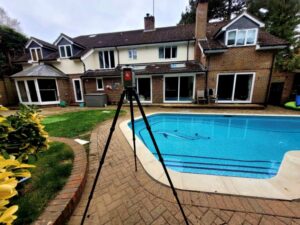Buying a house or flat is an investment that you should protect by commissioning a survey. The six defects most commonly identified by surveys are damp, roof damage, subsidence, gas and electrics, asbestos and – perhaps surprisingly – Japanese knotweed. We will consider each area in a moment.
If you are thinking of buying in or around the capital and need to organise a home buyers survey London is full of highly-qualified surveyors, so you will find a wide range to choose from. If you don’t know where to start, it is worth consulting estate agents, mortgage brokers or concierge services such as Sam Conveyancing for recommendations. Costs vary depending on the size, type and value of the property.
Damp
Damp occurs mostly in older properties, but new-builds are not immune. Damp is mostly caused by condensation, poor ventilation and leaks. The remedies do not always involve major work but the effects of damp are cumulative, leading to potential health problems if unchecked.
Roofs
Damage to the roof can render your property vulnerable to the weather. Whether it needs a full overhaul or localised tile replacement, this is not something that should be postponed.
Subsidence
Cracks in the wall don’t automatically indicate subsidence, so you need the advice of a professional. If remedial work is necessary, they can give you an idea as to its extent. If there is a structural problem, this could be a deal-breaker for your lender.
Gas and electrics
A surveyor won’t usually be an expert in these areas but will know enough to question the safety of an installation and whether it meets current building regulations. A property that has not changed ownership for many years may present particular problems. If a survey raises an alert, a separate electrical report would be advisable.
Asbestos
Banned in 1999 as a cause of cancer and respiratory diseases, asbestos has not been the subject of systematic removal. It still exists in a surprising number of properties and may only be discovered during a survey. It may not need to be removed if it can be safely contained, but it is essential for you to have sufficient information to take action if necessary.
Japanese knotweed
This highly destructive and invasive weed can cause havoc, damaging concrete, brickwork, asphalt and drains. Once it becomes established, it is a nightmare to remove; however, it can be eradicated if spotted early.

